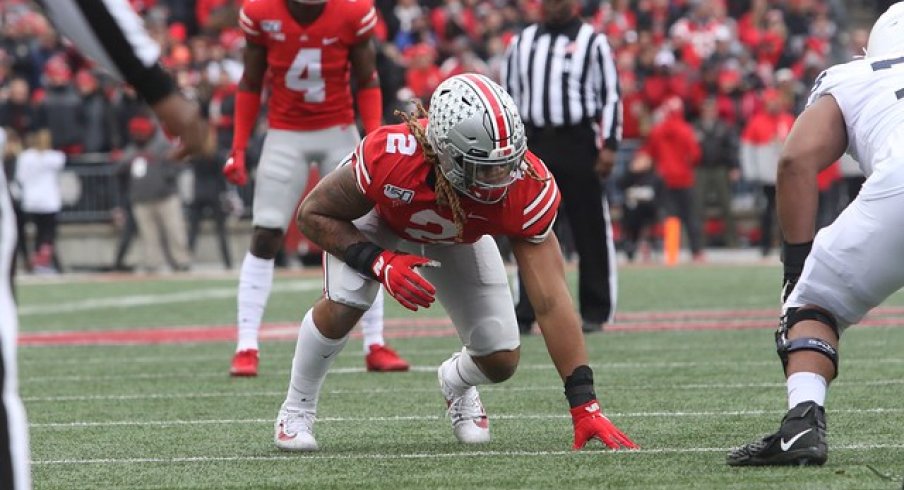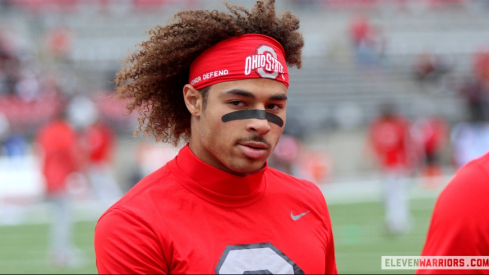While it was not as exciting as the previous two Ohio State-Penn State showdowns, the Buckeyes came away with a victory for the third year in a row against the Nittany Lions, winning 28-17. J.K. Dobbins ran for over 150 yards and the Silver Bullets held the visitors to just 227 yards of total offense in the win.
In today's Three Key Stats, we'll look at Ohio State's rushing inefficiency, Young's big game, and the Buckeyes' worst turnover differential of the season.
Ohio State ran the ball on nearly 75% of its offensive plays.
While the poor weather and an early lead certainly had an impact on Ryan Day's play-calling, the Buckeyes' insistence on running the ball was nearly its demise. Ohio State gained ran the ball 61 times and threw it just 22 times while gaining 3.75 yards per rushing attempt and 8.55 yards per pass attempt.
It is understandable as to why the Bucks would want to keep the ball on the ground, as running the clock out and limiting turnovers are two oft-cited justifications for the strategy. Ohio State, however, has thrown just one interception in the entire season, while the running game has produced eight turnovers.
In the second half with a comfortable lead, the Buckeyes ran the ball 29 times, averaging less than three yards a carry, and passed just eight times, averaging ten yards a passing attempt. With the lead and Ohio State's insistence on running the ball, one might assume that the Buckeyes' run-first strategy was shortening the game, limiting Penn State's possessions and the time left for the visitors to mount a comeback.
This thought, however, is not the case, as the local team held the ball for less than 15 minutes in the second half, with its longest drive taking 4:32 seconds off of the clock.
Ohio State's uber-conservative gameplan did not hurt the Buckeyes against the Nittany Lions, who were without a true passing threat for most of the game, but its lack of success and higher usage rate may be a concern as Ohio State continues to play highly-ranked opponents for the remainder of the season.
Chase Young's return was well worth the wait, as he recorded nine tackles, three sacks, and two forced fumbles against the Nittany Lions.
Having the best defensive player in the nation is a nice feeling, isn't it?
The junior defensive end recorded a career-high in tackles and had his second-highest sack output of the season, trailing just his four-sack effort against Wisconsin.
@Youngchase907 is must-watch TV pic.twitter.com/1qsPs9znq6
— FOX College Football (@CFBONFOX) November 23, 2019
Young now holds Ohio State's single-season sack record (16.5 sacks) and, with 30.5 career sacks, is closing in on Mike Vrabel's program-high mark of 36.
Chase Young is currently averaging 1.83 sacks per game, the best mark over an entire season since Terrel Suggs' 2001 outing. Suggs set the NCAA record for sacks in a season that year with 24.5.
The Bucks lost the turnover battle for the first time since Week One, fumbling three times while intercepting Penn State once.
At times, it looked as if Ohio State tried its hardest to give the game to Penn State. Despite nearly doubling the Nittany Lions' total yardage and holding a comfortable lead, the Buckeyes' mistakes nearly cost them the game.
Four fumbles, with three recovered by the visiting team, allowed Penn State to claw back into the game despite the home team's utter dominance. The 3:1 turnover ratio is the worst of the season and the Buckeyes' first loss in the turnover battle since Lane Kiffin's Owls came to town in August.
Ohio State's ugly win is nothing to scoff at, however, as the Bucks are undefeated heading into The Game and one of the two best teams in the nation.


